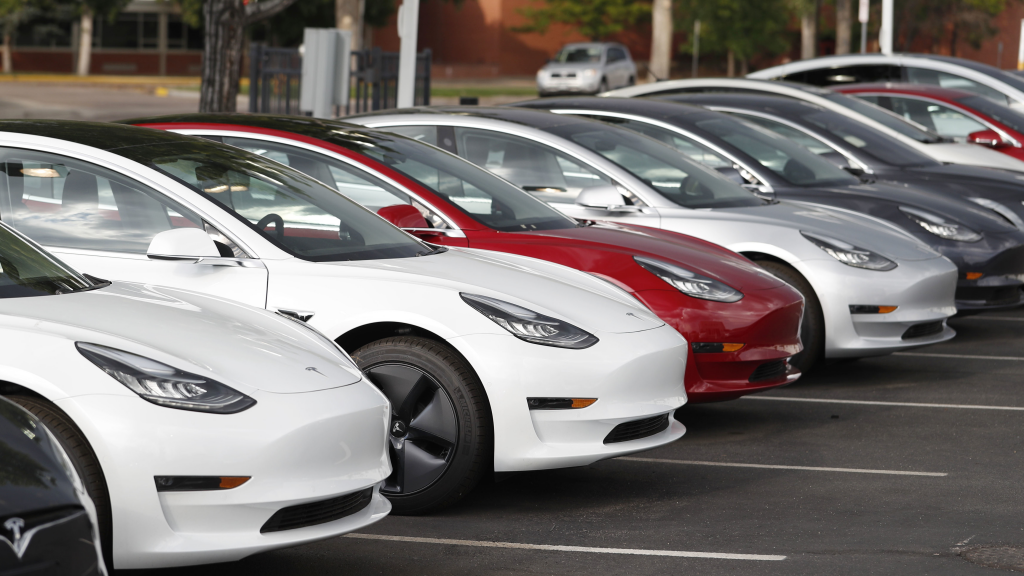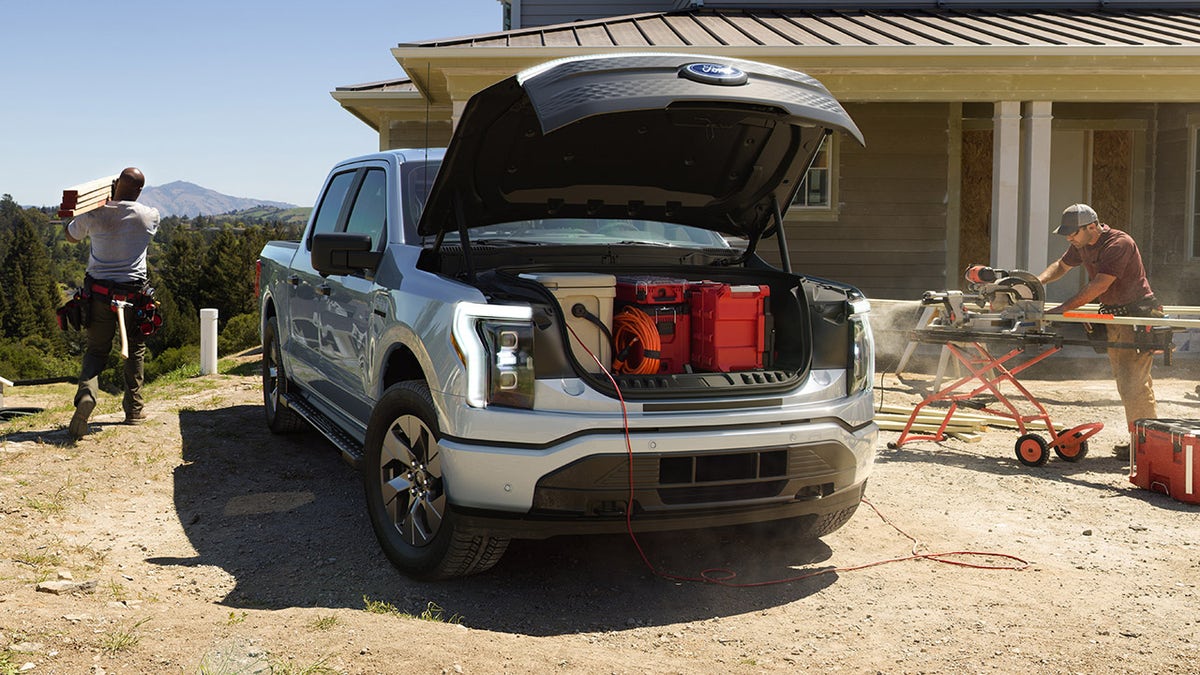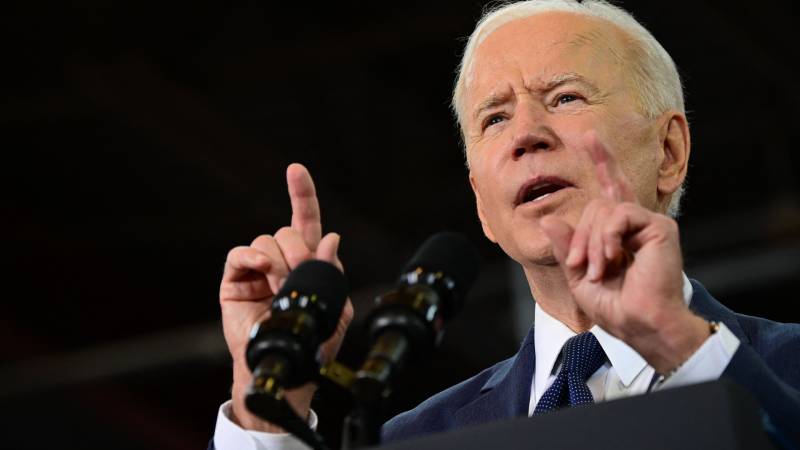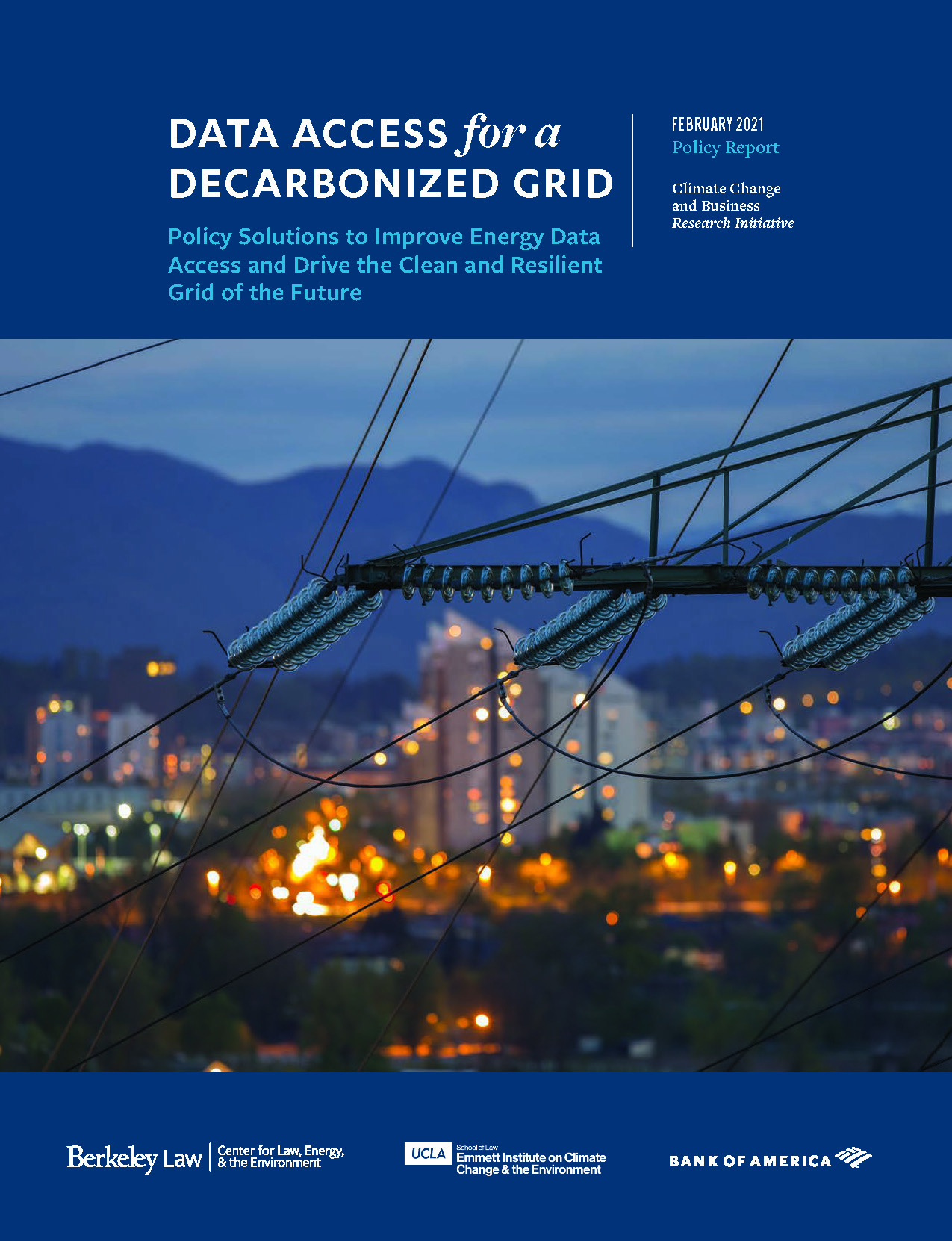Climate change news is often quite depressing, with frequent stories on the science and ever-worsening impacts. What gets lost in this otherwise important coverage is the amazing and inspiring tales of innovation and solutions happening all around us, in every sector and walk of life.
That’s why Berkeley Law’s Center for Law, Energy and the Environment (CLEE), in partnership with the UC Berkeley School of Journalism, launched the podcast Climate Break, which tells stories of climate solutions in less than two minutes. Climate Break features interviews with compelling scientists, innovators, organizers, and leaders discussing breakthroughs, new approaches, and examples of progress on climate change. And it’s almost entirely student run.
Over the past two years, we have recorded interviews with climate leaders like former California governor Jerry Brown and Arizona governor (and former Homeland Security secretary) Janet Napolitano, youth activists protesting fossil fuels, corporate leaders pushing for proactive climate lobbying, and entrepreneurs building clean energy facilities in tribal communities and retrofitting internal combustion engine vehicles in Egypt into electric models, among many other solutions.
And as of this year, a new episode of the podcast airs every Thursday on NPR-affiliate KALW 91.7 FM in San Francisco, offering listeners “climate solutions in a hurry.” In fact, you can tune in or stream live today at 7:19am and 3:48pm PT to hear our newest episode. We hope to expand to more radio stations soon.
For more on the podcast and its origins, Berkeley Law News profiled me and CLEE Project Climate Director Ken Alex, who had the idea for the program. Ken also serves as the show’s executive producer, along with CLEE senior climate fellow Chandra Middleton, who supervises the student team that helps produce the clips and draft additional information on each topic on our website.
So if you’re looking for inspiring solutions to address the climate crisis in less than two minutes, subscribe to Climate Break today on our website or wherever you get your podcasts!

Car sales data from 2022 is now out, and the results are encouraging. According to the Wall Street Journal, automakers sold 807,180 fully electric vehicles in the U.S. last year, or 5.8% of all vehicles sold, up from 3.2% a year earlier. And as E&E News reported (paywalled) 19 percent of new car purchases in California were zero-emission vehicles. This is a big increase from the 12 percent in 2021, according to the same California Energy Commission data, and a positive trajectory to a state-mandated goal of 100% zero-emission vehicle sales by 2035.
But only one EV company dominates. Tesla Motors accounted for 65% of total EV sales last year, down from 72% in 2021, but with no real competition in sight. Ford Motor Co. is a distant number 2 in sales at just 7.6% of the U.S. market, with Hyundai and affiliate Kia combined at third with 7.1% market share. In California, the top vehicles sold overall by a large margin were the Tesla Model 3 followed by Model Y, with combined sales of more than half of all EVs sold in the state. What’s more, Tesla earns large profit margins per vehicle compared to other automakers.
Other legacy automakers appear to be asleep at the wheel (so to speak). They are instead largely committed to making money on gas guzzlers, despite press releases and limited EV releases to the contrary. General Motors, for example, is allocating only 10% of a new $860 billion investment into EV development, according to Eletrek.
But not everyone thinks Tesla’s lead will continue. As Paul Krugman wrote in December after a stock price drop:
[I]t’s hard to explain the huge valuation the market put on Tesla before the drop, or even its current value. After all, to be that valuable, Tesla would have to generate huge profits not just for a few years but in a way that could be expected to continue for many years to come.
He cited the lack of obvious attributes that would give Tesla the kind of market dominance that we see with monopolistic companies like Apple or Google in their sectors.
But what Krugman and others miss is the significant technological advantage Tesla has right now over its competitors, in terms of charging speeds and user friendliness of the vehicles (Krugman admits he’s not a “car guy” and so likely hasn’t test driven EVs from different brands before to understand this difference).
But second, and perhaps most importantly, people like Krugman mistake Tesla as just a car company. But it’s not. It’s a fuel station operator, too, with the most significant build out of EV charging infrastructure in the world. What’s more, compared to the competition (third party charging companies rather than other automakers), Tesla’s chargers are higher-powered and more convenient and reliable.
But wait there’s more, as they say on the game shows. Tesla is also an energy storage company, with 152 percent growth last year in its stationary battery business. And it’s a solar roof company, though that latter business has largely been stalled in recent years. So when you package all of these business lines together, you’ll find a vertically integrated monopoly with a significant head start in essentially all of the climate-fighting tech that will dominate the future.
Yes, Tesla stock may be overvalued. But the perception behind it is quite justified. Other automakers need to catch up, as the 2022 sales data reveal, or they will face an existential threat to their survival — much as humans now do, thanks to their gas-guzzling products.

Tonight on State of the Bay, I’ll be hosting Jessica Wolfrom, environmental reporter for the San Francisco Examiner, for an update on San Francisco’s climate action plan. As my colleagues at CLEE analyzed in a report last year, the city may need up to $22 billion to meet its climate goals.
Then we’ll uncover the mystery and history of Alcatraz: the prisoners, protests, escapes and more. We’ll be joined by John Martini, author, historian and former Park Ranger on Alcatraz Island, and Karley Nugent, current Park Ranger on Alcatraz.
Finally, we’ll hear about another great bay area gem: The Pacific Pinball museum in Alameda, with Larry Zartarian, president of the Pacific Pinball museum.
What would you like to ask our guests? Post a comment here, tweet us @StateofBay, send an email to stateofthebay@kalw.org or leave a voicemail at (415) 580-0718.
Tune in tonight at 6pm PT on KALW 91.7 FM in the San Francisco Bay Area or stream live. You can also call 866-798-TALK with questions during the show.

It’s another double shot today of me hosting shows on KALW 91.7 FM San Francisco Bay Area. First, at 10am PT, I’ll be guest hosting Your Call’s One Planet Series, where we’ll discuss the viability of carbon capture technology in combating climate change. Carbon capture and storage is the process of capturing and storing carbon dioxide from polluting sources and storing it deep in the ground.
The just-passed (but not yet signed) Inflation Reduction Act includes a change in a crucial tax credit for the carbon capture industry—increasing the government subsidy for capturing CO2 from polluting sources from $50 to $85 per metric ton.
Some environmentalists call these carbon capture subsidies a handout to the oil industry and a distraction from urgently needed actions. How effective is this technology? Joining us to discuss are:
Tony Briscoe, environmental reporter with the Los Angeles Times
Naomi Oreskes, Henry Charles Lea Professor of the History of Science and Affiliated Professor of Earth and Planetary Sciences at Harvard University.
Then we’ll cover the socio-environmental impacts of lithium mining to produce electric vehicles. Joining us will be Jennifer Krill, executive director of Earthworks, a nonprofit organization committed to protecting communities from the adverse impacts of oil and gas and mineral extraction.
Second, later today on State of the Bay at 6pm PT, we’ll cover the latest in San Francisco’s housing saga, as the state threatens to take over land use planning for the City. Plus we’ll discuss the rise of autoimmune disorders and learn about California’s youth governor’s race, covered in a new documentary.
Tune in at 91.7 FM in the San Francisco Bay Area or stream live at 10am PT for Your Call and then again at 6pm PT for State of the Bay. What comments or questions do you have for our guests? Call 866-798-TALK to join the conversation!

UPDATE: Here’s an op-ed I wrote in CalMatters on this subject, published on June 14th. The Commission ultimately deadlocked on the decision and will revisit in October.
California is supposed to be a model for the world on how an advanced economy can reduce greenhouse gas emissions. But the state is not on pace to meet its legislated 2030 climate goals, and part of the problem is that state leaders are falling behind on deploying renewable energy. A recent controversy in the Mojave Desert over the iconic Joshua Tree is emblematic of the state’s challenges building the clean technology necessary to limit catastrophic climate change.
The goals are aggressive. The state requires its electricity grid to be completely carbon-free by 2045, including an interim target of 60% of grid power from renewable sources by 2030. This goal requires tripling the current annual build rate of solar and wind facilities. While state policy makers and industry leaders envision siting these clean energy projects all over the state, including offshore wind turbines and smaller-scale distributed solar resources in existing urbanized areas and brownfields, a substantial portion of that solar energy will need to come from utility-scale installations in the state’s vast, sun-soaked desert region. But the legal obstacles there could soon become formidable.
Specifically, the Center of Biological Diversity petitioned the California Fish and Game Commission in 2019 to list the iconic western Joshua Tree as a “threatened” species under the state’s Endangered Species Act. If state leaders were to affirm that petition, it would have the potential to undermine the state’s ability to meet its climate goals by effectively placing much of the Mojave Desert off limits to clean energy.
In its review of the Center’s petition, the California Department of Fish and Wildlife assessed the science last month and recommended not listing the species. It found that the trees are “currently abundant and widespread” with up to five million of them currently growing on a combined total estimated range of 3.4 million acres, in both their northern and southern desert areas. As with virtually all species, the department expects climate change to impact Joshua Tree habitat (though the species is still expected to persist in high numbers) through the end of this century. But as the temperature increases and rainfall patterns change (assuming it becomes more dry), lands to the north and at higher elevations could provide a refuge, with future climatic conditions similar to their present-day ones.
The commission will make a final determination in June. But if the commission overrules the department’s recommendation and lists the Joshua Tree as threatened, the consequences for California’s clean energy goals could be dire. Developers will either be prevented from building solar power in much of the Mojave Desert or will face costly mitigation measures to do so, which would diminish this needed deployment in one of the prime solar-generating areas of the state. Globally, it would hinder the state’s ability to show the world that a renewable build out in an advanced economy is feasible.
To be sure, these desert ecosystems are fragile, host unique species and are iconic in their majestic scenery – as is the Joshua Tree itself. No one (I would hope) enjoys seeing Joshua Trees cut down, even if it’s for a critical cause like climate change. But how much desert land are we talking about? The California Independent System Operator (CAISO), the state’s grid operator, currently has 19,000 megawatts of solar power and energy storage facilities in its queue that are located in the Joshua Tree’s southern range. Even if all these facilities were built (and some will almost certainly fall out), they would occupy only a tiny fraction of the range of the species. It’s a relatively small footprint for a technology that California desperately needs to deploy to benefit us all.
To put this desert deployment in context, a state energy agency report last year found that in tripling its annual build rate of clean energy, California will need to go from a 2019 deployment of 12.5 gigawatts of utility-scale solar to 69.4 gigawatts by 2045 – an almost 6-fold increase. Those 19 gigawatts of desert solar power and storage would therefore greatly help the state meet the long-term deployment needed to completely decarbonize the grid.
But perhaps worse, if the California Fish and Game Commission chooses to list the Joshua Tree as threatened for the sole reason of a warming climate, then under that logic, virtually any species could be listed as threatened, given the climate disruption the entire planet faces. That justification would in turn make it virtually impossible for the state to deploy precisely the clean technology we need to avoid making the situation worse, from energy storage to wind to solar.
All of us — humans, plants and animals — are threatened by the emergency of climate change, unless we take the necessary steps like deploying more wind and solar energy to combat it. The technology exists to stop climate change from worsening. What we lack is the political will to get it done. The Fish and Game Commission now faces that same test, whether to follow the department’s scientific findings or place yet another obstacle in the path of clean energy.

Now that Elon Musk has purchased Twitter with plans to take the company private, what are the potential consequences for the fight against climate change, the crucial issue of our time? Like him or not, the Tesla CEO has arguably been the most impactful private industry actor revolutionizing clean technology. Will the purchase affect his work on clean technology?
It would be hard to overstate Musk’s value to the global decarbonization effort. His company Tesla Motors, guided by his relentless and innovative vision, has helped revolutionize the automobile industry, completely transforming it in the face of legacy automakers who made only a token effort on electric vehicles at best for decades. Now they face extinction from their inability to embrace change. Given the transportation’s sector outsized role in contributing to climate change, Musk’s role in reshaping this industry has helped give the world a fighting to chance to avoid the worst of climate impacts.
As if that’s not enough, Tesla’s work on electric vehicles has also vastly accelerated energy storage deployment of lithium ion batteries, which are central to decarbonizing the electric grid along with intermittent renewables. What’s more, Tesla now has the promise to dramatically scale up heat pumps, an important all-electric means of heating and cooling spaces. The company has improved upon them for use in vehicles, with enormous upside for expansion to buildings.
And not to mention Tesla also has a solar division. Though it has admittedly languished since Musk purchased Solar City from his cousin a few years ago, in the long run solar panels pair perfectly with home battery storage and electric vehicles for consumers.
But all of that progress could be undermined going forward by Musk’s purchase of Twitter. The specific risk for the climate change fight is that Musk might become “distracted” running Twitter (i.e. absent at critical times, with his mental energy no longer devoted to providing critical vision and direction for the company, especially since he already runs a space rocket and tunneling company). If that happens, could Tesla lose its competitive edge?
Perhaps worse, Musk’s deal to take Twitter private is heavily leveraged, and his Tesla stock provides much of the collateral. If Twitter starts to sputter (the company lost $493 million last year, and Musk himself has acknowledged that this purchase is not about making money) and Musk defaults or has to sell, will that devalue Tesla stock, depriving that company of capital for its much-needed global expansion?
On the upside, given his track record, we could assume that Musk has the potential to work some magic for a social media site plagued by controversies over free speech and how it handles misinformation. If Musk can instill more confidence among social media users across the political spectrum in Twitter, while improving debates that counter climate misinformation, perhaps Twitter can be a force for positive climate education. But given the partisan entrenchment of views on both climate policy and science, this seems unlikely to occur.
If by some miracle Musk can turn Twitter into a cash cow, then another upside is that his additional resulting wealth could help bolster not only his proven companies like Tesla but potentially provide him extra funds to invest in new clean tech start-ups that could help reduce emissions in other industries. You never know.
On balance, a better Twitter could be a positive force for society. But given Musk’s key role in the climate fight, it’s hard to see the upside for the critical clean technology we need to reduce emissions and stave off the worst of climate change.
Of course, Musk is free to do what he wants with his billions. And he’s already arguably contributed more to the climate fight than any other company leader. But in the long run, a fight over social media won’t matter much if the world doesn’t get a handle on reducing greenhouse gas emissions.

As 2021 draws to a close, I wanted to share some climate optimism. Climate and energy writer Dave Roberts interviewed carbon market analyst Kingsmill Bond, who is incredibly bullish on the long-term prospects for clean technology and bearish on fossil fuels.
In fact, he believes the world reached peak demand for fossil fuel, including coal and oil and gas, back in 2019, and that even as demand recovers, it won’t go beyond this peak. Meanwhile, clean technologies are plummeting in price and cost of deployment.
It’s worth reading the transcript of the full interview, but some highlights are below.
First, Bond notes that four of the crucial clean technologies (solar PV, wind, batteries, and electrolyzers to convert surplus electricity into hydrogen) are on established learning curves (the amount that their costs drop for every doubling in deployment) at between 16 and 34 percent. In practice, that means this already-cheap energy source is “a) going to get cheaper, b) going to spread globally, and then c) be followed up by these other technologies, also on learning curves, which will then provide us with the energy that we need at much lower cost.”
Second, he describes how fossil fuel incumbents are already pretty much on a death spiral. Specifically, he cites how legacy automakers were unprepared for the increasing shift toward new electric vehicles over old internal combustion engine (ICE) models:
You then look at the cost curves of the new stuff, and you realize that you’re going to have to change. You have to reallocate your capital out of ICE [internal combustion engine] cars and into electric vehicles. Meanwhile, you figure out that you’ve got continuous decline now coming for your ICE car sales, so suddenly, your ICE factory is a liability, not an asset. Furthermore, as your sales of ICE cars start to drop, you’ve got to allocate the same fixed-cost structure over a smaller number of cars, and your cost per unit increases. This is economics 101.
That’s what happens to the old people. What then happens to the new people, Tesla and BYD and the EV makers, is, as they produce more cars, the costs of the batteries fall because of these learning curves. As costs fall, demand increases, and as demand increases, they’re taking more market share, and they can then go to the second feedback loop, which is the financial markets.
Tesla can go to the financial markets and in an afternoon they can raise several billion dollars and build a new factory in Berlin, which increases their capacity to build at the same time the fossil fuel sector is finding it very difficult to raise capital, and is obliged by investors to change their strategic direction — as we saw, famously, with Engine No. 1.
The reason these incumbents struggle to adapt is relatively simple:
The answer is, incumbents, first of all, try and resist change. Then they struggle to put capital into these new technologies, because they’re not sufficiently profitable. You saw lots of examples of the oil center saying that over the last decade: we’re not going to put our money into solar and wind because we can get a 20 percent IRR on oil against a 5 percent IRR on solar. Why would we? The problem, then, is that by the time this stuff does get profitable and starts to eat into their old business, it’s too late, and other people have moved into this area. That’s exactly what’s happening now in the energy system.
Finally, Bond argues that the potential for cheap and abundant clean energy is massive: “If you look at the technical potential of solar and wind, which has been a lot in the last five years, it’s 100 times our global energy demand today.” It’s hard to imagine just how different our world would be if clean energy was essentially cheap and limitless.
Something to ponder as we head into the new year of 2022, with much work to be done to address climate change. May it be a good one for all of you!

This week, Ford unveiled an electric “lightning” version of its best-selling F-150 truck. Why is this potentially a big deal? This truck is America’s most popular vehicle, and has been for 40 years. Ford sold more than 203,000 F-series trucks in the first quarter of this year, compared with a combined total of 98,000 electric vehicles in the same period.
Perhaps more significantly, electric vehicles have yet to be introduced for the truck market, although Tesla, GM, and start-up Rivian all plan to introduce one. So this vehicle finally fills an important void in the market.
There are two other significant upsides to the vehicle. First, it’s relatively low priced, at least the basic model, at about $40,000. Add in $7,500 in federal tax credits, plus possibly $2,000 in saved fueling costs each year, and the vehicle is competitive with most low-end gas-powered trucks. Of course, the high-end version is almost $90,000.
Another potential upside is the fact that Ford is partnering with solar-and-battery installer Sunrun to allow the vehicle to provide backup power to homes. That means the battery in the vehicle can also power your house during outages, a topic of greater interest after recent outages in California due to wildfires and extreme heat and in Texas due to record cold. Automakers have otherwise been reluctant to provide this customer access to the vehicle’s batteries, out of concern over impact to battery life and potentially, at least for Tesla, due to its possible negative impact on sales of their stationary batteries (the PowerWall).
This added home-backup feature could help jump start competition among EV automakers to allow vehicle batteries to power buildings, which would be a good thing. It taps into an additional benefit of EVs, so consumers can assume they’re not just buying a car but a home generator. It also can help build in society-wide resilience to extreme weather and potentially help reduce grid emissions if people power their homes off the vehicle during times of electricity supply constraints that might otherwise be met by dirty power.
But two concerns remain with the F-150. First, some customers buy trucks to haul heavy stuff. But these big loads can greatly reduce battery range. Ford is trying to be transparent in calculating how weight will impact range. But given the lack of public fast-power charging infrastructure, will this inhibit sales? Truck buyers may not want to wait around 30 minutes to repower the vehicle every 100 miles, if they can even conveniently find a charging station.
Second, while the home battery backup option is intriguing, will it become functionally impractical for most consumers, if it requires expensive upgrades to building electrical panels? The truck power will require at least 80 amps of available capacity on a home service box, but most homes have between 100 and 200 amp capacity to start. So there may be little extra capacity available for wiring in a load of that size, without a costly upgrade.
We’ll have to wait and see, but it’s encouraging that a new type of electric vehicle model is now on the market. Especially one that can appeal to a much broader range of consumer, such as those in conservative states that have historically been anti-EV and generally opposed to clean energy technology. Yet it’s just the tip of the iceberg on electric trucks, as Ford will soon find itself competing head-to-head with Tesla, Rivian and GM in this lucrative e-truck market.
But at least one consumer already seems sold on the electric F-150. Here’s President Biden taking a spin on Ford’s test track this week:

President Biden yesterday unveiled his “infrastructure” plan, but it’s really his best and greatest shot to address climate change. I’ll be speaking about the plan and what it means for the climate at 10:20am PT on KQED’s Forum. You can also hear my thoughts on the electric vehicle charging aspect of the plan on yesterday’s NPR Marketplace.
The proposal calls for transformational investments in rail, bridges, and road repair, along with a decarbonized electricity grid, incentives for electric vehicles, an end to fossil fuel subsidies, and home energy retrofits, among other goals. The plan even seeks to end single-family zoning.
Tune in this morning to hear more!
Today, the Center for Law, Energy and the Environment (CLEE) at Berkeley Law and the Emmett Institute on Climate Change and the Environment at UCLA Law are releasing a new report, Data Access for a Decarbonized Grid, which highlights key policy solutions to expand access to the energy data needed to operate a fully decarbonized grid.
Join our webinar on Wednesday, April 7 at 10am PT to learn more.

As California approaches the state target of delivering 100 percent zero-carbon power by 2045, state leaders face the challenge of decarbonizing electricity by rapidly expanding the use of renewable energy sources. At the same time, they face increasingly severe heat waves and wildfires that threaten the reliability and resilience of the grid.
Individuals, businesses, and utilities are turning to a growing group of flexible grid technologies to meet this challenge—such as distributed renewables, small-scale battery storage, and smart appliances and building energy management. They are becoming increasingly mainstream and affordable. But these technologies, which facilitate the flexibility needed to deliver reliable power on a fully renewable grid, also rely on constant flows of energy data in order to operate effectively and efficiently.
The data include grid structure and operations data that depict system assets and capacity; customer-level data on consumption and rates; and real-time performance data for distributed generation and storage assets. Utilities, technology providers, and residents already exchange these data in abundant quantities. However, a set of regulatory, privacy, and incentive-based challenges limit the ability of regulators, utilities, and developers to generate and manage the data optimally.
These barriers include utility business and regulatory incentives that reward major physical capital investments over data management initiatives; potentially outdated rules restricting customer data-sharing; and concerns around cybersecurity and physical grid asset security.
To identify solutions to these challenges, CLEE and UCLA Law’s Emmett Institute convened a group of energy data experts in August 2020, and our new report details the solutions including:
- Adopting performance-based regulation of electric utilities to provide financial incentives for high-quality, efficient data generation and management.
- Re-examining the California Public Utilities Commission’s 15/15 rule for customer data aggregation (which sets numerical limits on customer cohorts) and considering use of differential privacy methods instead.
- Modernizing utility IT systems to adapt to rapidly evolving technological and customer needs.
Ultimately, a fully decarbonized electrical supply will require a large-scale restructuring of the grid across generation, distribution, and consumption activities. In the face of growing threats to grid resilience and reliability, California energy leaders will have to help energy producers and consumers throughout the state gain access to the flexible grid technologies needed to maximize efficiency and minimize service disruption. Ensuring the optimal flow of energy data is vital to that effort.
You can access the report and its full set of recommendations here.
You can also learn more about state priorities for increasing access to energy data by joining CLEE and the Emmett Institute for a free webinar on Wednesday, April 7 at 10am PT. Speakers include:
- California Energy Commissioner Andrew McAllister
- Clean energy expert Audrey Lee
- Sky Stanfield of Shute, Mihaly & Weinberger
We will discuss policy opportunities and technology needs to accelerate the transformation of the grid. RSVP here. Hope you can join!
This post was co-authored with Ted Lamm and cross-posted on Legal Planet.



